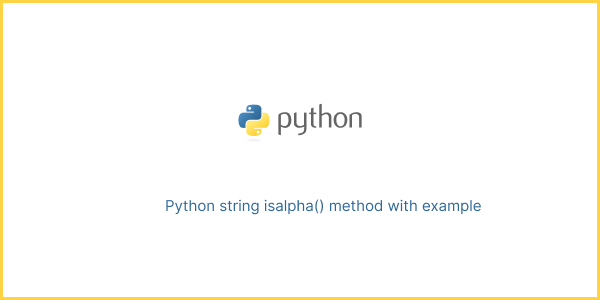The isalpha() method in Python is a built-in method used for string handling. The isalpha() method returns True if all the characters in the string are alphabets (either uppercase or lowercase), otherwise it returns False.
Syntax:
string.isalpha()How to use the isalpha() method:
string1 = "HelloWorld"
print(string1.isalpha()) # This will return True
string2 = "Hello World"
print(string2.isalpha()) # This will return False because of the space
string3 = "Hello123"
print(string3.isalpha()) # This will return False because of the numberExample 1
Using isalpha() to checking if the string is fully alphabetical.
str1 = "HelloWorld"
str2 = "Hello World"
str3 = "Hello123"
print(str1.isalpha()) # Output: True
print(str2.isalpha()) # Output: False
print(str3.isalpha()) # Output: FalseExample 2
When you want to ensure user input is only alphabetic, such as for a name field.
# Let's assume you are getting a user input
user_input = input("Please enter a word: ")
# Check if the input is alphabetic
if user_input.isalpha():
print("Your input is alphabetic.")
else:
print("Your input contains non-alphabet characters.")Example 3
isalpha() can be used in combination with a list comprehension to filter out non-alphabetic strings from a list.
strings = ["Hello", "World123", "Python", "123", "AI 2023"]
# And you want to filter out the strings that are fully alphabetic
alphabetic_strings = [s for s in strings if s.isalpha()]
print(alphabetic_strings) # Output: ['Hello', 'Python']



